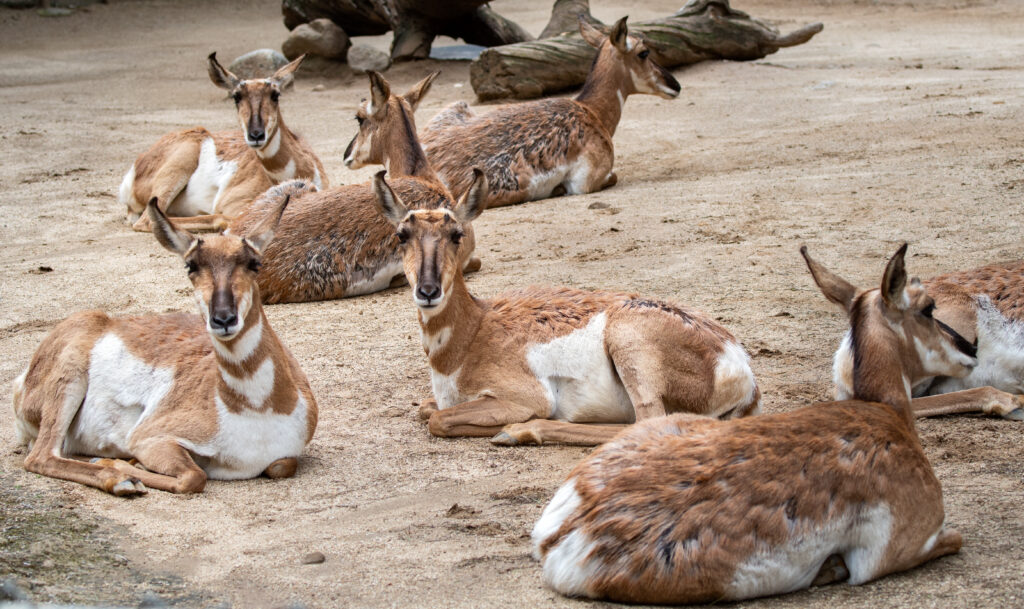by Autumn Hilden

The Zoo recently welcomed a new male peninsular pronghorn (a.k.a. berrendo)! He has joined the females as a breeding recommendation through a cooperative program that is working to create a sustainable population in human care with the eventual goal of releasing the endangered species into the wild.
In their native range of the desert and semi-desert areas of Baja California Sur, Mexico, peninsular pronghorns once numbered in the thousands but had shrunk to fewer than 30 animals in the early 2000s. At that time, the L.A. Zoo joined forces with Mexico’s Espacios Naturales and a handful of dedicated U.S. partners to form the Peninsular Pronghorn Recovery Program (PPRP). Over the past two decades we’ve provided critical funding, advisory support, and on-the-ground assistance to the PPRP, and in 2006 we helped found the first breeding program for this subspecies in the United States. Since then, 55 fawns have been born at the L.A. Zoo, giving guests the opportunity to observe these rare and remarkable animals up close and increasing awareness and support for wild counterparts.
However, COVID-era restrictions on animal transfers and an all-female herd slowed the work of our program in the last couple of years. Now, the new male, Bowie, signals a new chapter.

Bowie’s journey to us has been in stages. Like all peninsular pronghorns, he first underwent a federally mandated quarantine that was “quite a commitment,” says Director of Animal Programs Beth Schaefer. “They have to stay in our quarantine facility for six months,” she explains, a very long process compared to other mammals because the pronghorns are being imported from a native area and we don’t know their medical history.
Once Bowie was through the quarantine period, he transferred to the herd’s habitat and found a large group of females waiting for him. “Eventually he will be paired with a few of our current females,” says Senior Keeper Jonnie Greslie-Stroud. Still, “It will be a little bit before he is introduced to the females he will be paired with,” she notes. “Breeding season is typically summer to early fall.”
To help him make the transition and ease some biological pressure, keepers allowed him to remain close by the females but separate in the pronghorn barn. Once he’s ready, he’ll join the others. For now, Bowie is “active and curious,” Greslie-Stroud observes. “He is settling in well.”

